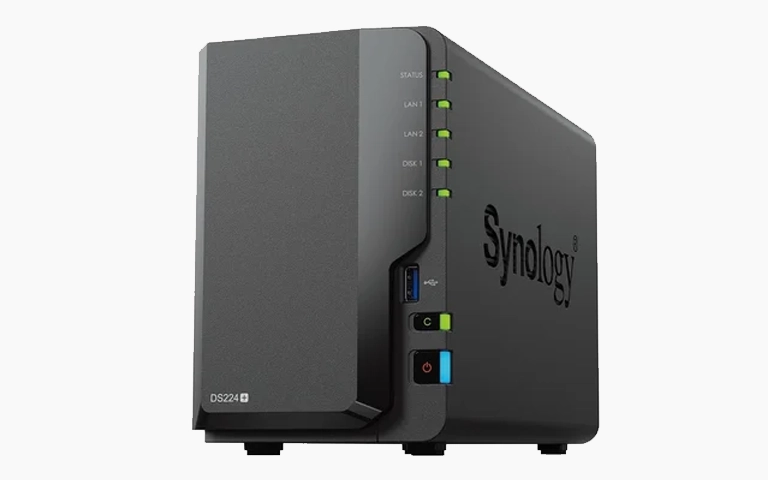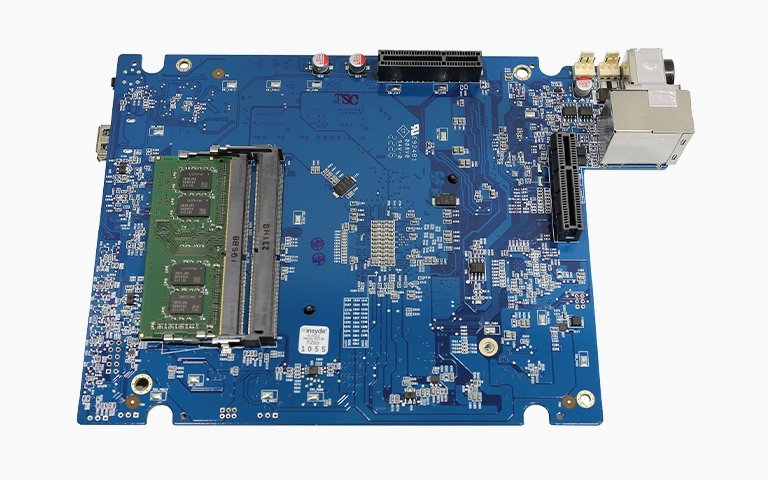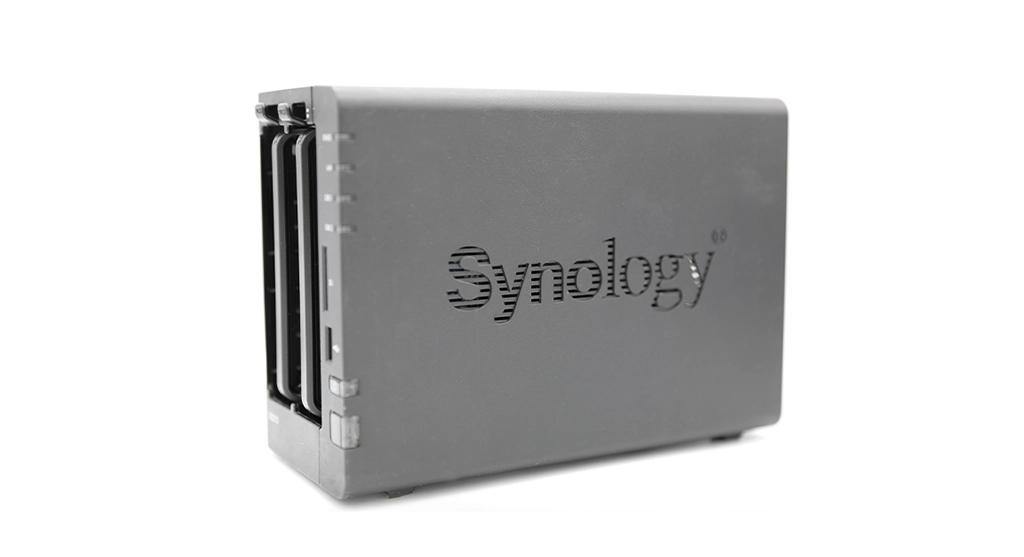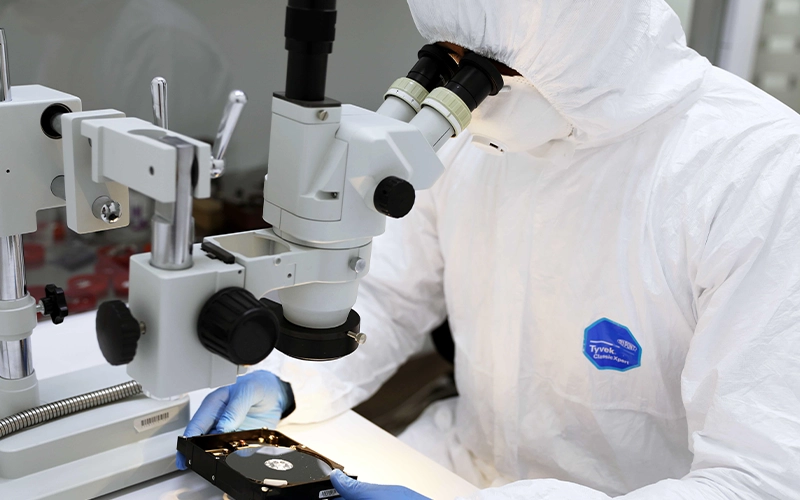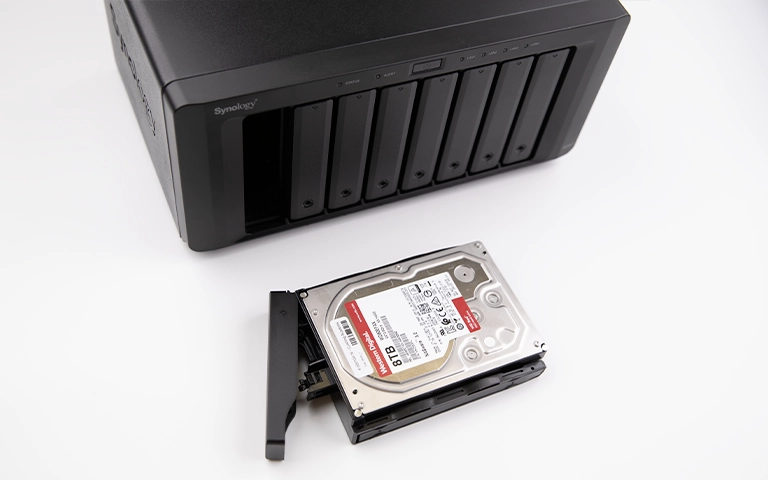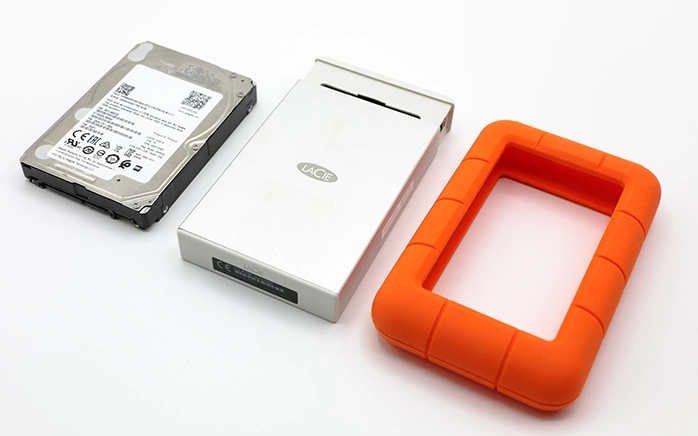Observing a constantly blinking blue power light on your Synology NAS device signifies a critical issue preventing correct system boot-up. Unlike normal brief flashing during startup, a persistent Synology blue light flashing indicates the DiskStation Manager (DSM) operating system cannot load, immediately raising concerns about data accessibility.
This state typically points towards serious hardware or core system software problems. While basic checks are warranted, attempting extensive DIY fixes risks complicating data recovery. This guide explains what the Synology blinking blue light typically indicates, common causes, and the necessary professional data recovery process.
What Does the Synology Blinking Blue Light Mean?
According to Synology documentation, a constantly blinking blue power light generally indicates issues with the motherboard (logic board) or power supply unit (PSU), preventing the NAS from successfully loading the DiskStation Manager (DSM) operating system. It signals a failure during the hardware initialization or bootloader phase, before the main OS can start.
The startup sequence involves hardware checks and loading the DSM operating system from the internal drives. A continuous blink means this process has stalled critically early, typically due to:
- Motherboard/Logic Board Failure: This is the most common cause cited by Synology for a persistent blinking blue light. Damage or failure of components on the main circuit board prevents the system from initializing.
- Power Supply Unit (PSU) Issues: While less common than motherboard failure for this specific symptom (PSU failure often results in no power at all), unstable power delivery could potentially interfere with the boot sequence causing this error state.
- Faulty Memory Module (RAM): Incorrectly seated or failed RAM can prevent the system from passing its initial hardware checks.
- Bootloader Corruption: The very basic software that initiates the DSM load process might be corrupted (rare).
This is different from a brief blue blink during normal startup, or blinking status lights (which relate to drive activity or volume status). A continuously blinking blue power LED is the critical indicator.
Initial Safe Checks (Proceed with Caution)
While internal hardware failure is likely, perform these external checks first:
Check External Connections
- Power Adapter: Ensure the correct Synology power adapter is securely connected to the NAS and a working wall outlet.
- Network Cable: While unlikely to cause this specific boot failure, ensure network cables are seated properly.
Perform a Power Cycle
- Procedure: Press and hold the power button for several seconds until the NAS powers down (if it reacts). Unplug the power adapter. Wait 5-10 minutes. Plug the adapter back in and attempt to power on normally.
Check RAM Seating (Optional - Use Extreme Caution)
- If Comfortable & ESD Precautions Understood: Power off/unplug. Consult model manual for RAM access. Carefully remove and reseat RAM module(s). Test power-on. Do not proceed if unsure; incorrect handling risks damage.
If these steps do not resolve the blinking blue light, stop further DIY hardware troubleshooting.
Why is Fixing a Synology with a Blinking Blue Light Difficult?
Fixing a Synology NAS with a blinking blue light is typically beyond user repair because it usually signals motherboard hardware failure. Diagnosing and repairing motherboard components requires specialized electronic testing equipment and micro-soldering skills. DIY attempts risk further damage and permanent data loss from the drives.
Risks Associated with DIY Attempts
Attempting further fixes when faced with the Synology blinking blue light (sometimes called BBoD – Blinking Blue light of Death) is highly risky for data:
Motherboard Damage: Trying self-diagnosis or repair risks irreparable damage.
Data Loss During “Fixes”: Improper drive handling or attempting DSM reinstalls without prior data recovery can cause data loss.
Ignoring Root Cause: The blinking light indicates the OS cannot load; software fixes or network access are impossible. The problem is hardware/core firmware level.
Get a Free Consultation.
Our recovery experts are ready to assess your device and guide you through the safest path to recovery. Fill out the form to get started.
"*" indicates required fields
Data Recovery: The Priority for a Non-Booting Synology
When a Synology NAS shows the persistent blinking blue light, the device itself may be unrepairable or require motherboard replacement (losing configuration). Focus must shift to safely recovering data from the internal drives (HDDs or SSDs).
How Professional Data Recovery Works
Even if the Synology motherboard has failed, the data usually resides safely on the internal drives, configured in a RAID or SHR array. Professionals bypass the faulty NAS hardware:
- Drive Removal & Labeling: Each drive is carefully removed from the Synology enclosure and labeled with its original bay position.
- Drive Health Assessment: Each drive is individually tested for physical health. Any failing drives may require separate repair (e.g., PCB work, cleanroom head replacement via standard Hard Drive Recovery methods).
- Drive Imaging: Healthy drives (and repaired failed drives) are cloned sector-by-sector.
- RAID/SHR Reconstruction: Specialized software and expert analysis are used to determine the original array parameters (disk order, stripe size, parity, SHR specifics) directly from the drive images. The array is virtually rebuilt. This requires deep knowledge of RAID Data Recovery.
- Data Extraction: Files and folders are extracted from the virtually mounted volume onto new storage media.
See our data recovery process for more detail.
Industry-Leading 99% Success Rate
PITS Data Recovery frequently recovers data from Synology NAS units stuck blinking blue. Our engineers understand common motherboard failures, complex Synology Hybrid RAID (SHR)/RAID configurations, and use specialized tools to retrieve data safely. Visit: Synology NAS Data Recovery page.
Recommended Actions If Your Synology Light Blinks Blue
Perform Safe Power Cycle: Try the power-off, unplug, wait, power-on sequence once.
Check RAM (Optional/Careful): Reseat RAM only if comfortable and following ESD precautions.
STOP Further DIY: Do not repeatedly power cycle. Do not attempt motherboard repairs. Do not reset or initialize drives.
Note Model & Lights: Record your Synology model number and confirm it’s the power light blinking blue continuously.
Contact PITS Data Recovery: Explain the situation clearly. Professional data recovery is almost always required.
Your Data Security Is Our Priority
Data privacy isn’t optional. It’s our commitment. Our secure recovery process ensures your sensitive information stays protected from start to finish.
HIPAA Compliant
GDPR Compliant
Secure Facility
NDA Available
Trust in certified security. Start your recovery today! Call Now: 888.611.0737
Conclusion: Addressing the Synology Blinking Blue Light
The persistent Synology blinking blue light indicates a critical error preventing OS loading, usually due to motherboard failure. While basic checks are warranted, DIY repairs risk permanent data loss, especially with RAID/SHR complexity.
Prioritize data safety. When faced with the BBoD, engage professional data recovery services. PITS Data Recovery has the specialized knowledge and tools for Synology data recovery in these situations. If your Synology displays this error, contact us for expert assistance. Explore general NAS Data Recovery Services.

